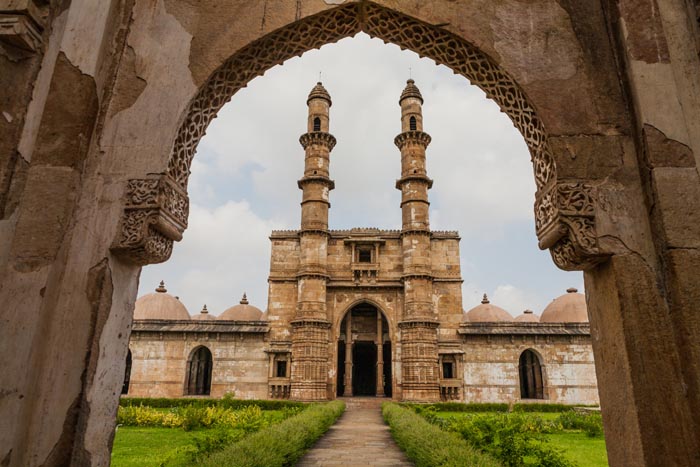Jama Masjid Ahmedabad

Information on Jama Masjid (Ahmedabad, Gujarat) - History & Architecture
Jama Masjid is one of the most attractive masjids in India. Situated in Ahmedabad city of Gujarat, Jama Masjid has best construction of its period in entire western region of India. It was created in the year 1424 throughout the sovereignty of Ahmed Shah. It was probably the largest masjid in India on that time. Jama Masjid was designed as a portion of big plan which was desired by sultan Ahmed Shah. It is the most inspirational architectural phenomenon for Muslim people.
Jama Masjid Ahmedabad Religious Significance
Similar to other religious masjids, Jama Masjid has also its religious significance. Muslim devotees take appropriate carefulness regarding the rituals of the masjid. They are quite reverential and have considerable faith in Jama Masjid; after all it is a popular place for them to worship their god. Irrespective of Muslim devotees, other visitors are also welcomed here. However, inside the masjid, they are required to stay calm and maintain a silence and meditative environment. Devotees require to remove their shoes while entering and must not disturb others who are busy in giving prayer. Throughout the praying time, devotees should keep the head covered with white clothes or cap. Furthermore, females are not allowed to enter in the main hall of Jama Masjid.
Each year several festivals such as Eid, Muharram and Ramadan among other are celebrated in Jama Masjid with proper devotion. The masjid is closely situated in the old locality of Ahmedabad city and can be entered through three different gateways. Jama Masjid contains the burial place of sultan Ahmed Shah along with three other popular sultans such as Mohammed Shah, the son of Ahmed Shah and Qutub-Ud-Din, the grandson of Ahmed Shah. These burial compartments are near to the eastern entrance of Jama Masjid. The well created formation of Jama Masjid is able to endure the self-indulgent climatic conditions.
Jama Masjid Ahmedabad Mythology
The construction of Jama Masjid was specially made by sultan Ahmed Shah, who was the ruler of Muzaffarid territory. He created Ahmedabad city as his capital. The city itself was labelled according to his name. According to historical records, Ahmed Shah conceptualised this wonderful architectural masterpiece in Gujarat. It was a 15th century construction. Traditionally, the masjid was created for private purpose of sultans. However, later it has gained religious importance and started to be adored by Muslim devotees. The famous monument lies toward the south side of spectacle curve. In the western portion of the masjid, there are popular graves of his son, grandson, queen and other wives of sultan.
Jama Masjid Ahmedabad Architectural Significance
Jama Masjid is created with yellow sandstone. It is focussed on a big quadrilateral yard which is 75 meter long and 66 meter wide. The yard of Jama Masjid is creased with an arcade on three sides. The prayer compartment occupies the eastern side. The prayer compartment is also rectangular shape and is covered by four vaults. In the middle of the yard, there is a four-sided basin for cleansings. There are three gateways to enter in Jama Masjid.
Jama Masjid is based on Indo-Saracenic architectural style. Several vaults of the masjid is imprinted like lotus flowers which is quite similar with the design of Jain temples. The columns of Jama Masjid are imprinted with bells, hanging from chain which is apparent in every Hindu temple. The open yard of Jama Masjid is amazed with white marble and is ringed by a walkway with huge Arabic inscription. The two key towers, adjoining the primary rounded entryway was collapsed during the natural calamity in the year 1819, but its lower portion still exist today. The main prayer compartment of the masjid possesses around 260 supports with 15 vaults, making the hall a beautiful one.